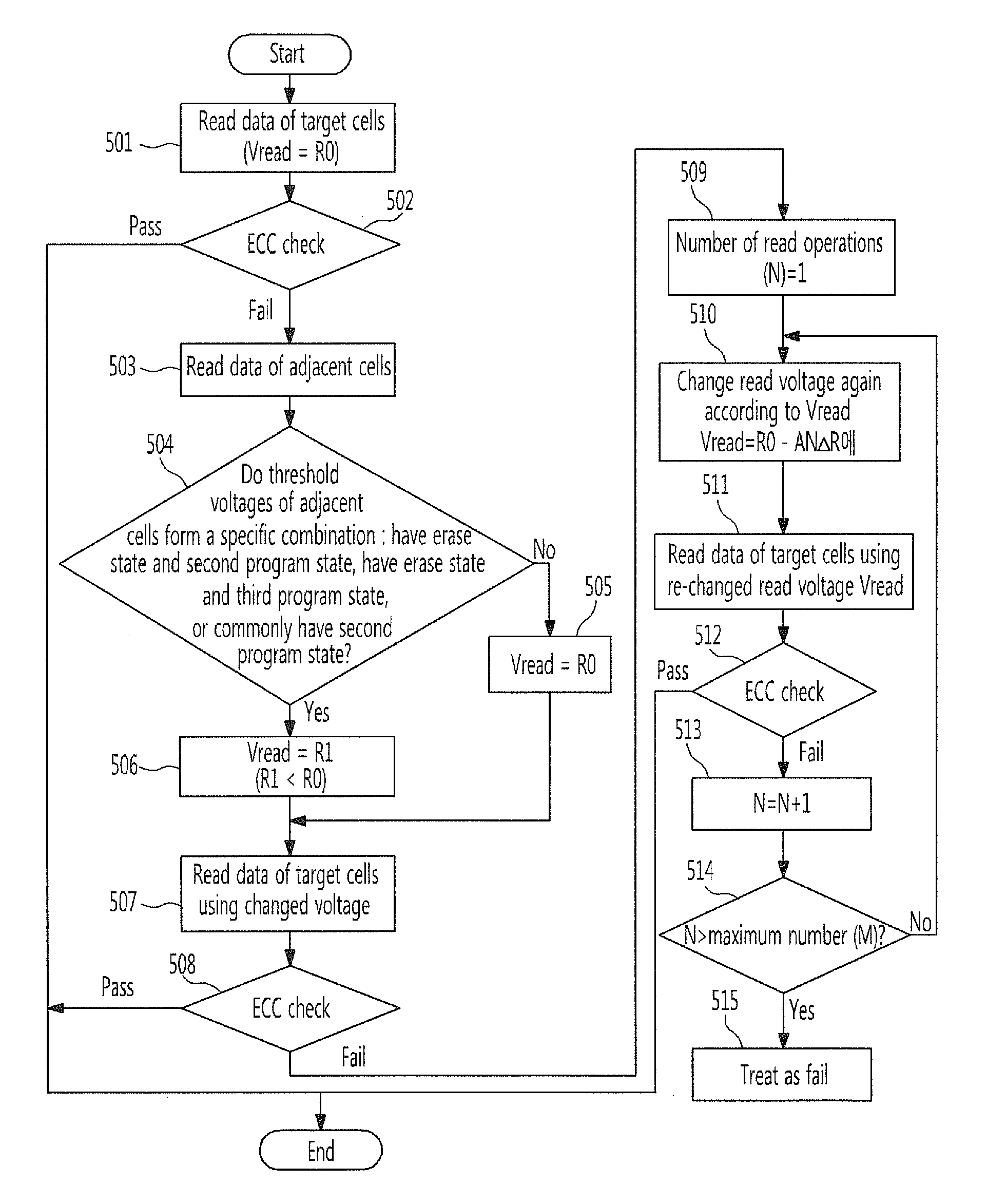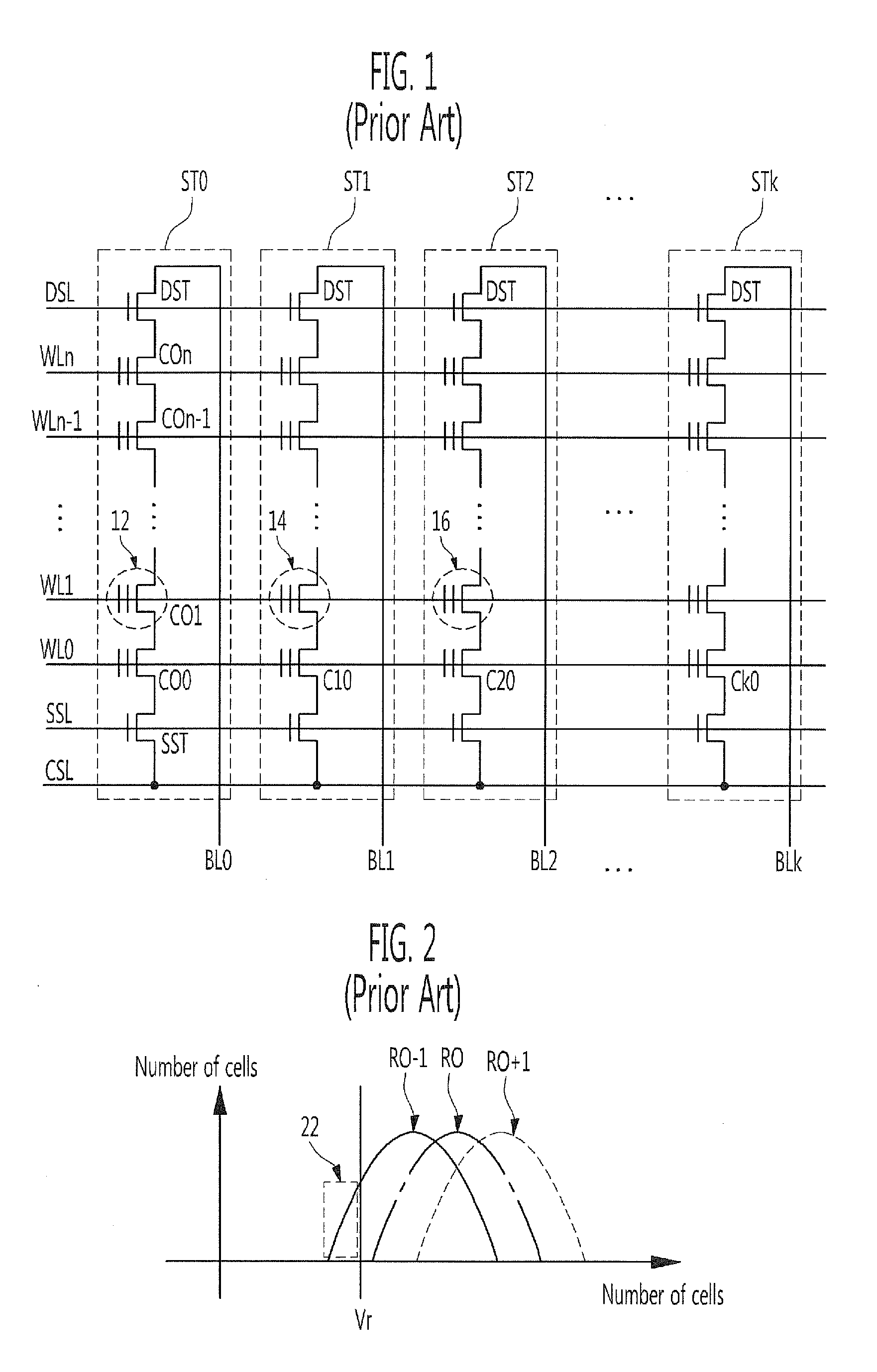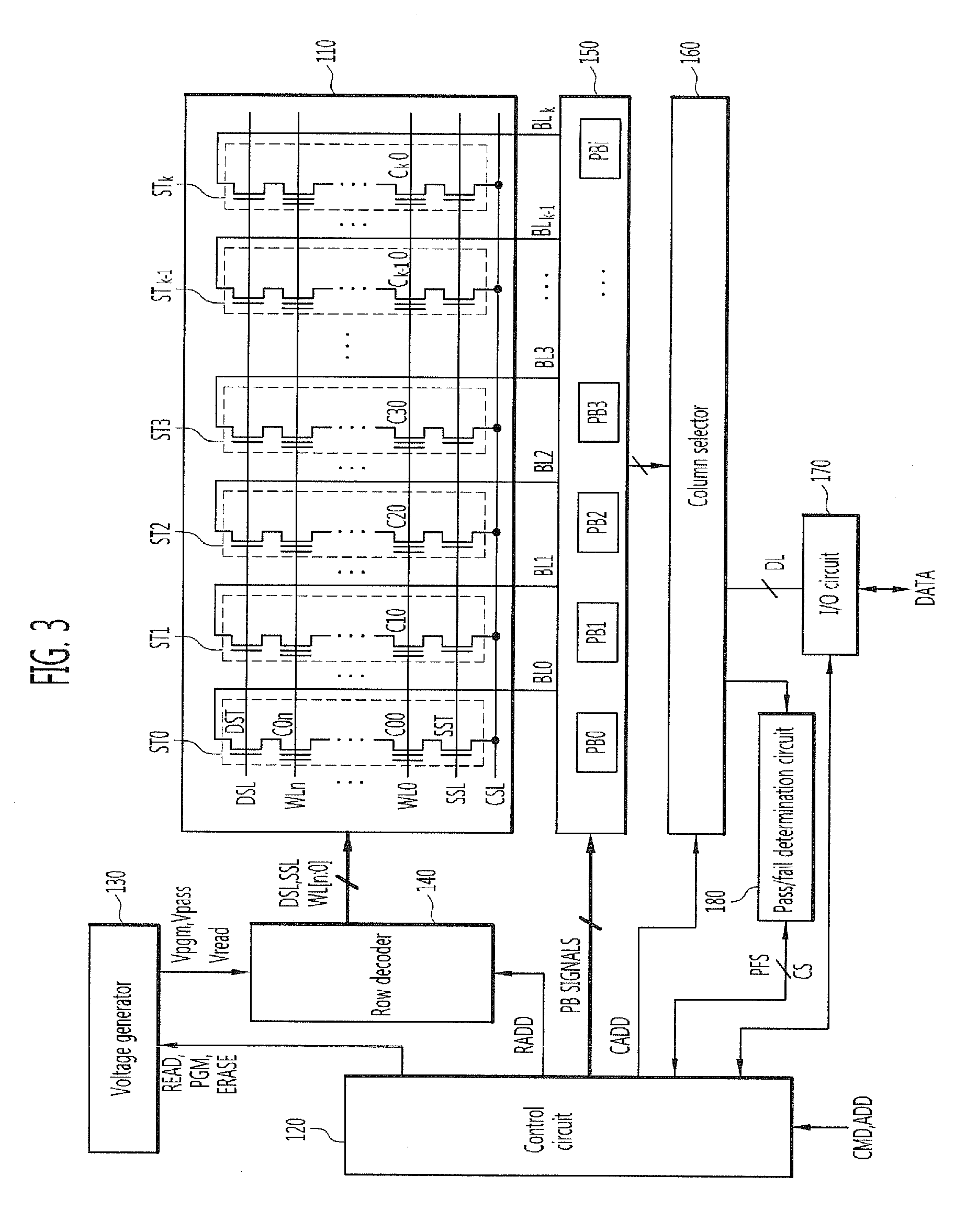Read methods of semiconductor memory device
a semiconductor memory and read method technology, applied in the direction of digital storage, static storage, instruments, etc., can solve the problem of changing the threshold voltage of previously programmed cells, and achieve the effect of improving the reliability of the read operation
- Summary
- Abstract
- Description
- Claims
- Application Information
AI Technical Summary
Benefits of technology
Problems solved by technology
Method used
Image
Examples
first embodiment
[0036]FIG. 4 is a flowchart illustrating a read method according to this disclosure.
[0037]Referring to FIG. 4, the threshold voltages of memory cells may be classified into an erase state, a first program state, a second program state, and a third program state. The erase state refers to a state in which the threshold voltage is lower than a ground voltage 0 V, the first program state refers to a state in which the threshold voltage has the lowest level (e.g., non-erase-state voltage level), and the third program state refers to a state in which the threshold voltage has the highest level. In the following embodiments, three program states are described as an example, but the threshold voltage may have three or more program states. The read operation of the first embodiment is performed as follows.
[0038](Step 401) Read Data of Target Cells
[0039]When the read operation is started, the data of target cells to be read is read by using a start read voltage Vread=R0. If memory cells coup...
second embodiment
[0054]FIG. 5 is a flowchart illustrating a read method according to this disclosure.
[0055](Step 501) Read Data of Target Cells
[0056]When the read operation is started, the data of target cells to be read is read. In the read operation, a start read voltage Vread is R0.
[0057](Step 502) Check ECC
[0058]It is determined whether an error correction operation is feasible based on the read data of the target cells and an error correction code. If, as a result of the determination, the error correction operation is determined to be feasible, the read operation of the target cells is finished.
[0059](Step 503) Read Data of Adjacent Cells
[0060]If, as a result of the determination at step 502, the error correction operation is determined to be unfeasible, the data of adjacent cells adjacent to the target cells is read. Here, the adjacent cells are coupled to the same word line as the target cells, but belong to different cell strings from the cell strings of the target cells.
[0061](Step 504) De...
third embodiment
[0086]FIG. 6 is a flowchart illustrating a read method according to this disclosure.
[0087](Step 601) Read Data of Target Cells
[0088]When the read operation is started, the data of target cells to be read is read. In the read operation, a start read voltage Vread is R0.
[0089](Step 602) Check ECC
[0090]It is determined whether an error correction operation is feasible based on the read data of the target cells and an error correction code. If, as a result of the determination, the error correction operation is determined to be feasible, the read operation of the target cells is finished.
[0091](Step 603) Read data of adjacent cells
[0092]If, as a result of the determination at step 602, the error correction operation is determined to be unfeasible, the data of two adjacent cells belonging to the same string as the target cells, from among adjacent cells adjacent to the target cells, is read.
[0093](Step 604) Determine states of adjacent cells
[0094]The states of the adjacent cells are dete...
PUM
 Login to View More
Login to View More Abstract
Description
Claims
Application Information
 Login to View More
Login to View More - R&D
- Intellectual Property
- Life Sciences
- Materials
- Tech Scout
- Unparalleled Data Quality
- Higher Quality Content
- 60% Fewer Hallucinations
Browse by: Latest US Patents, China's latest patents, Technical Efficacy Thesaurus, Application Domain, Technology Topic, Popular Technical Reports.
© 2025 PatSnap. All rights reserved.Legal|Privacy policy|Modern Slavery Act Transparency Statement|Sitemap|About US| Contact US: help@patsnap.com



